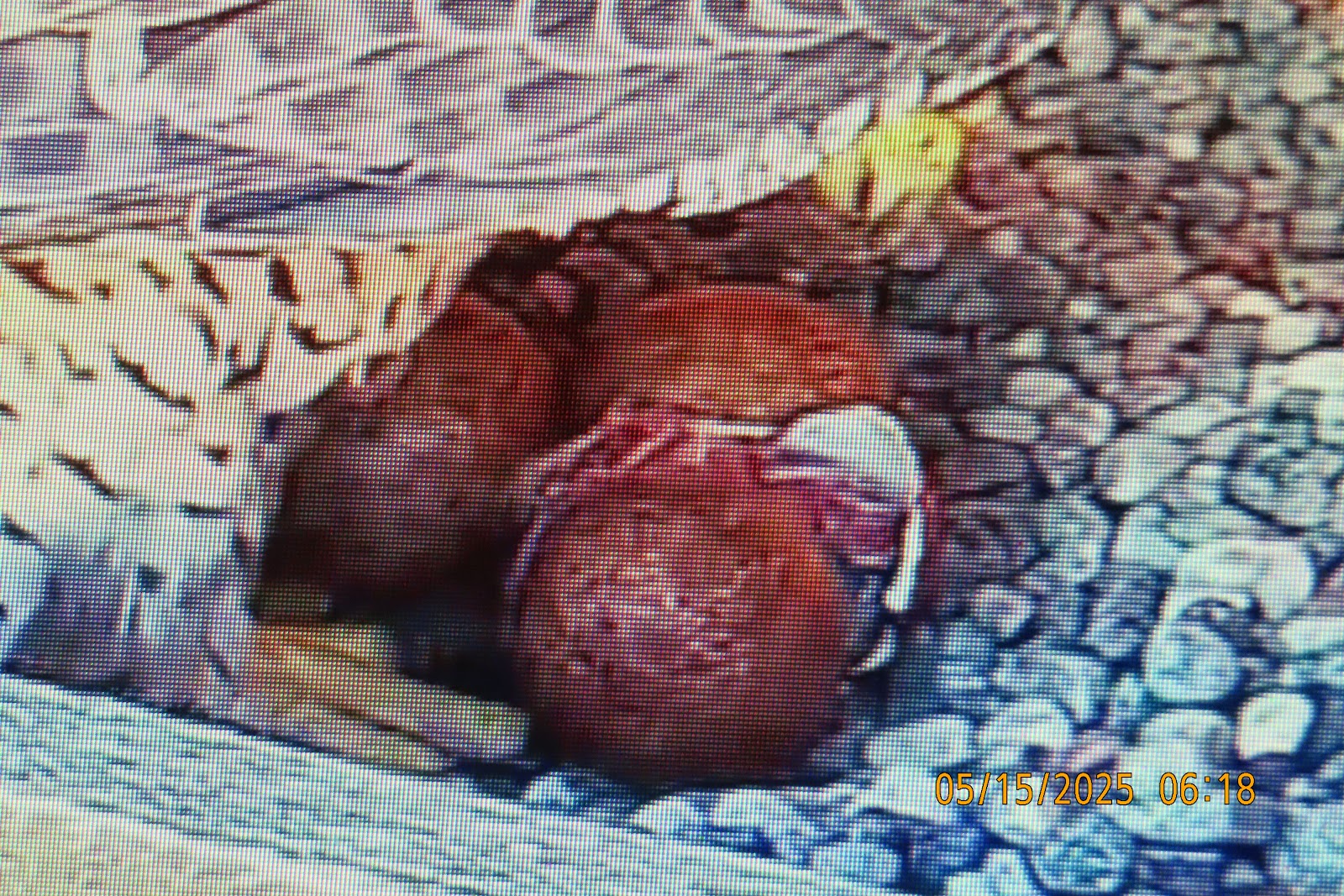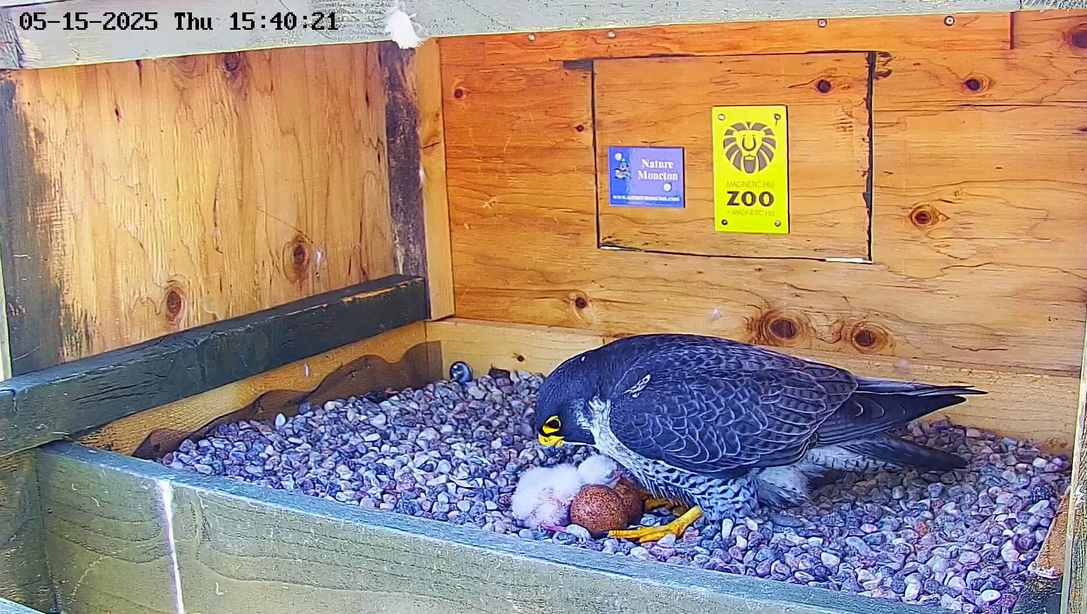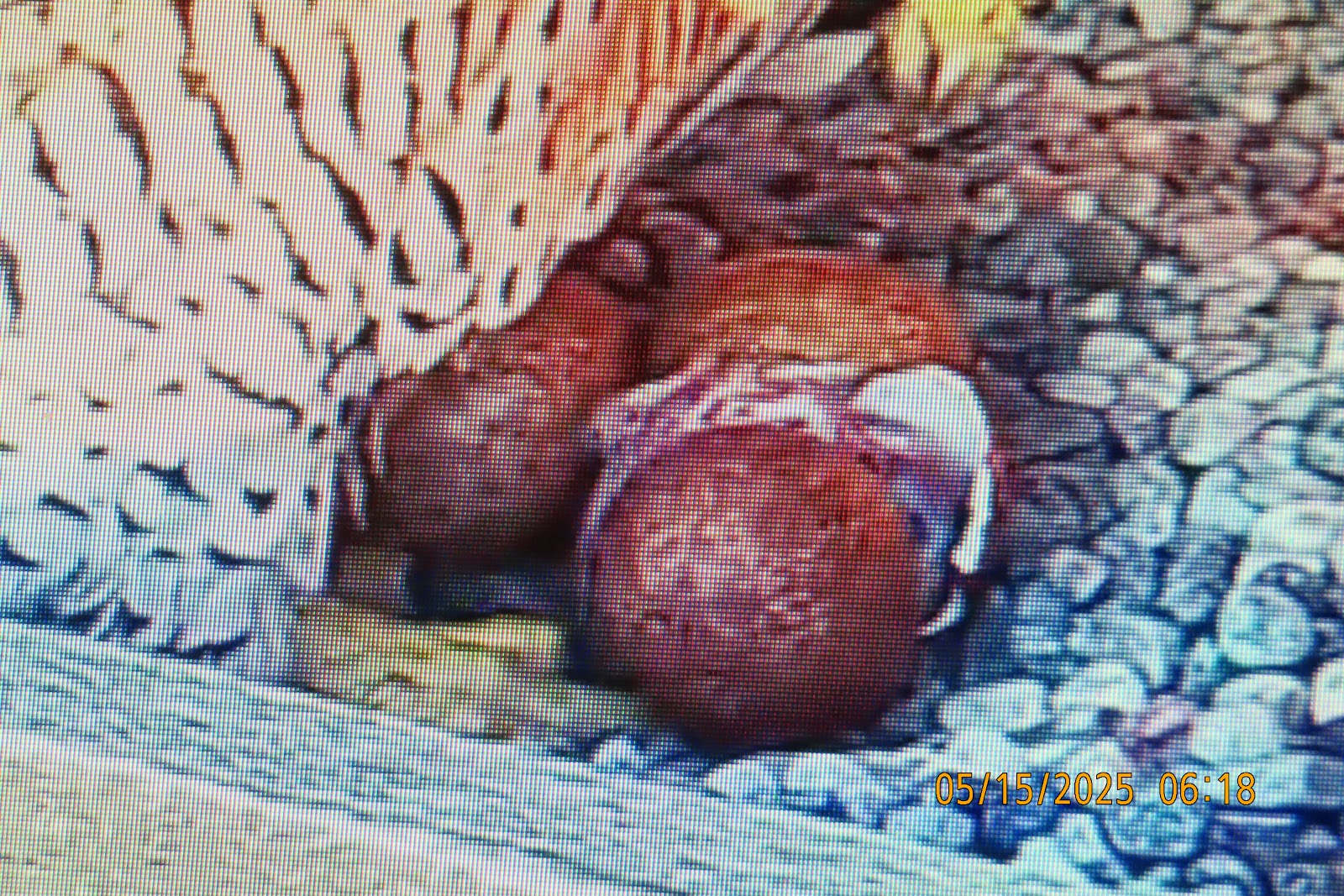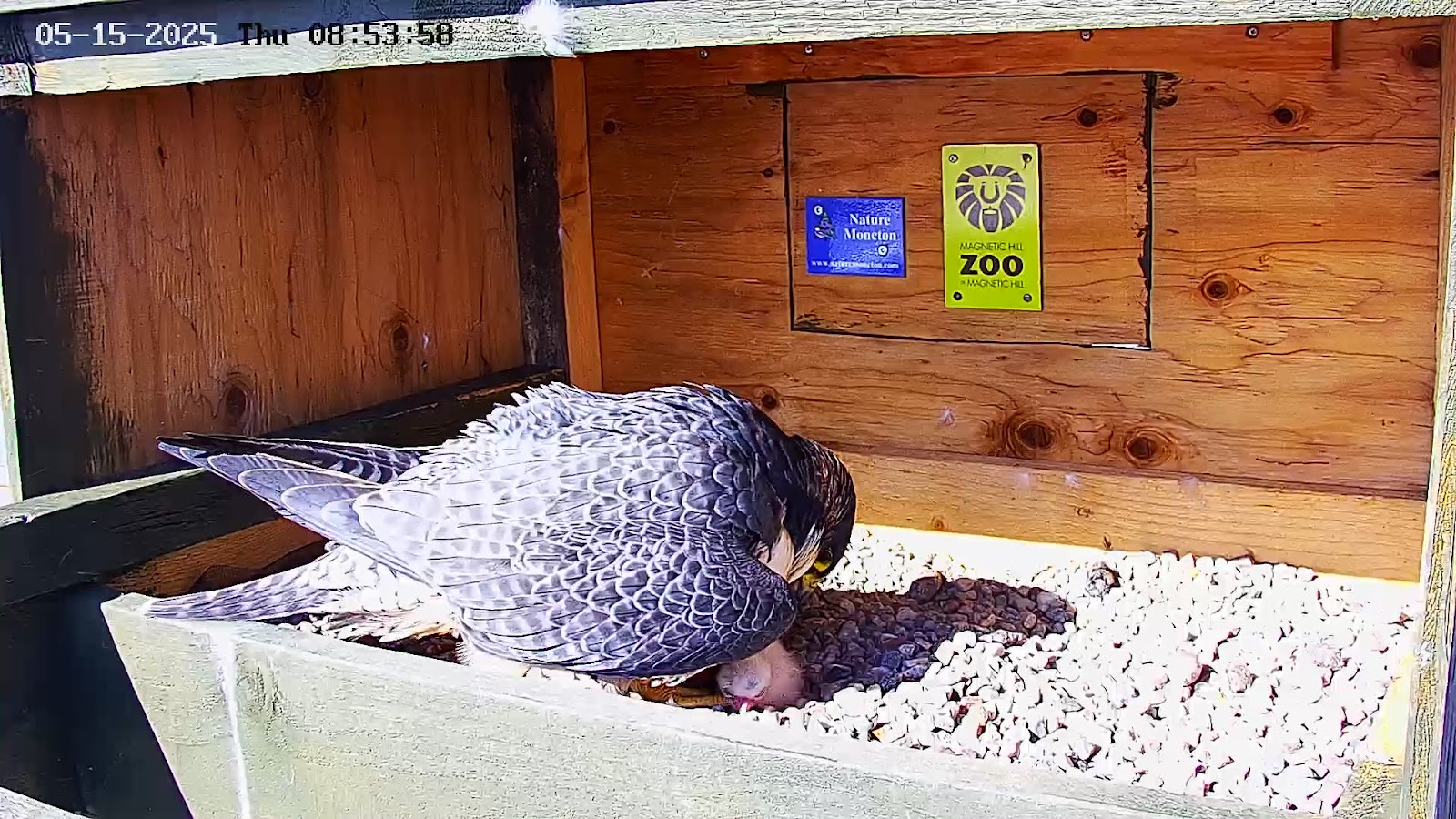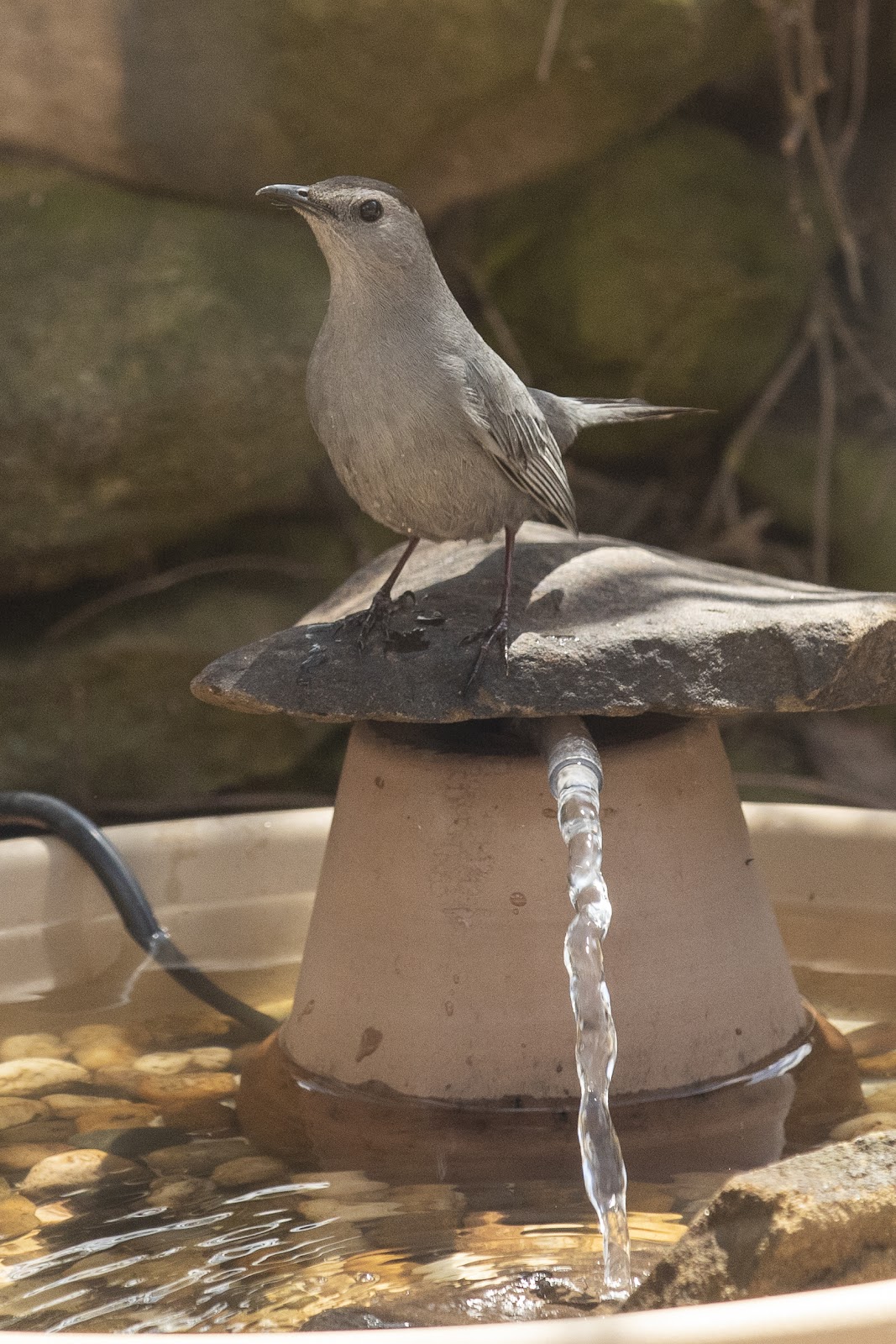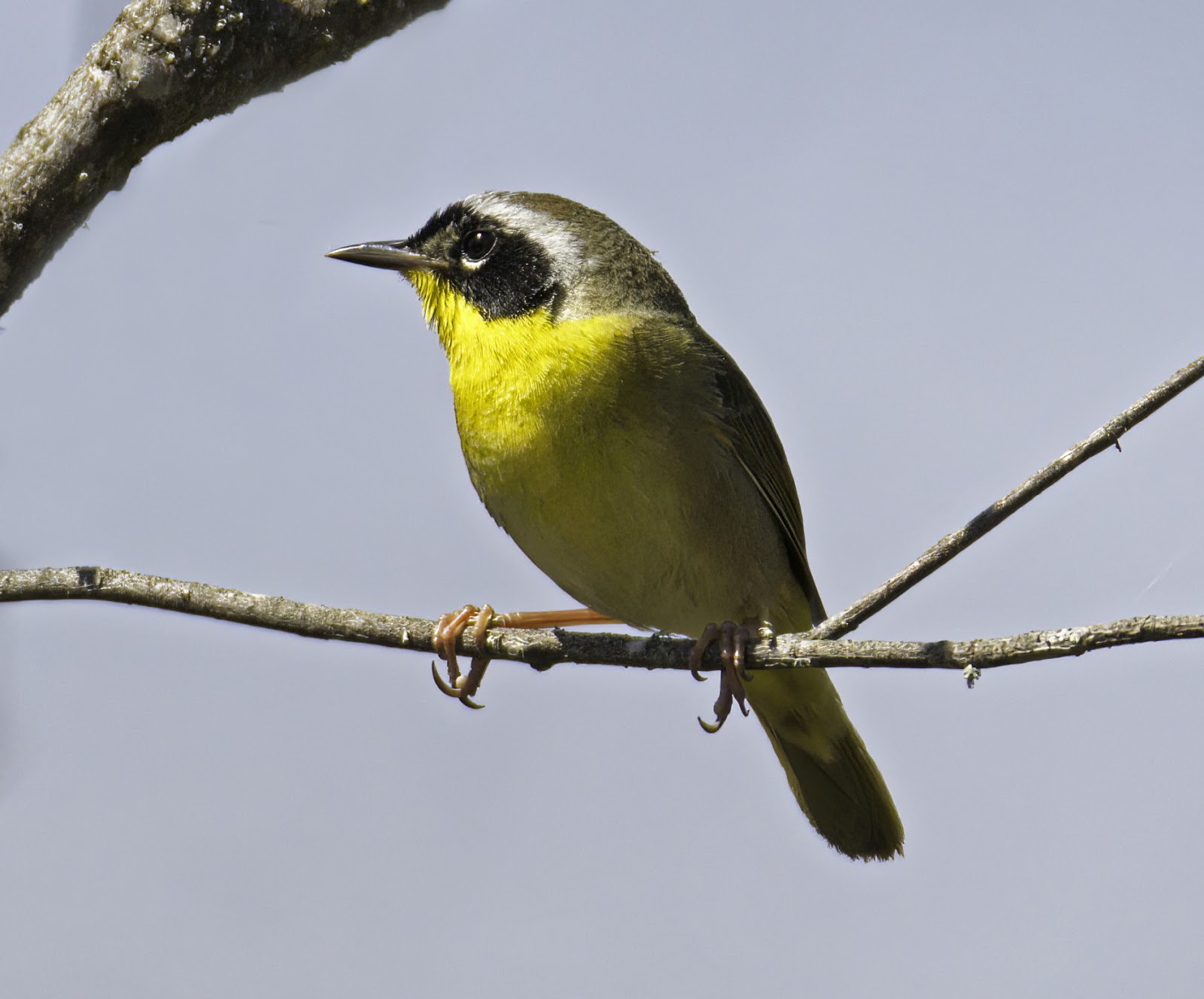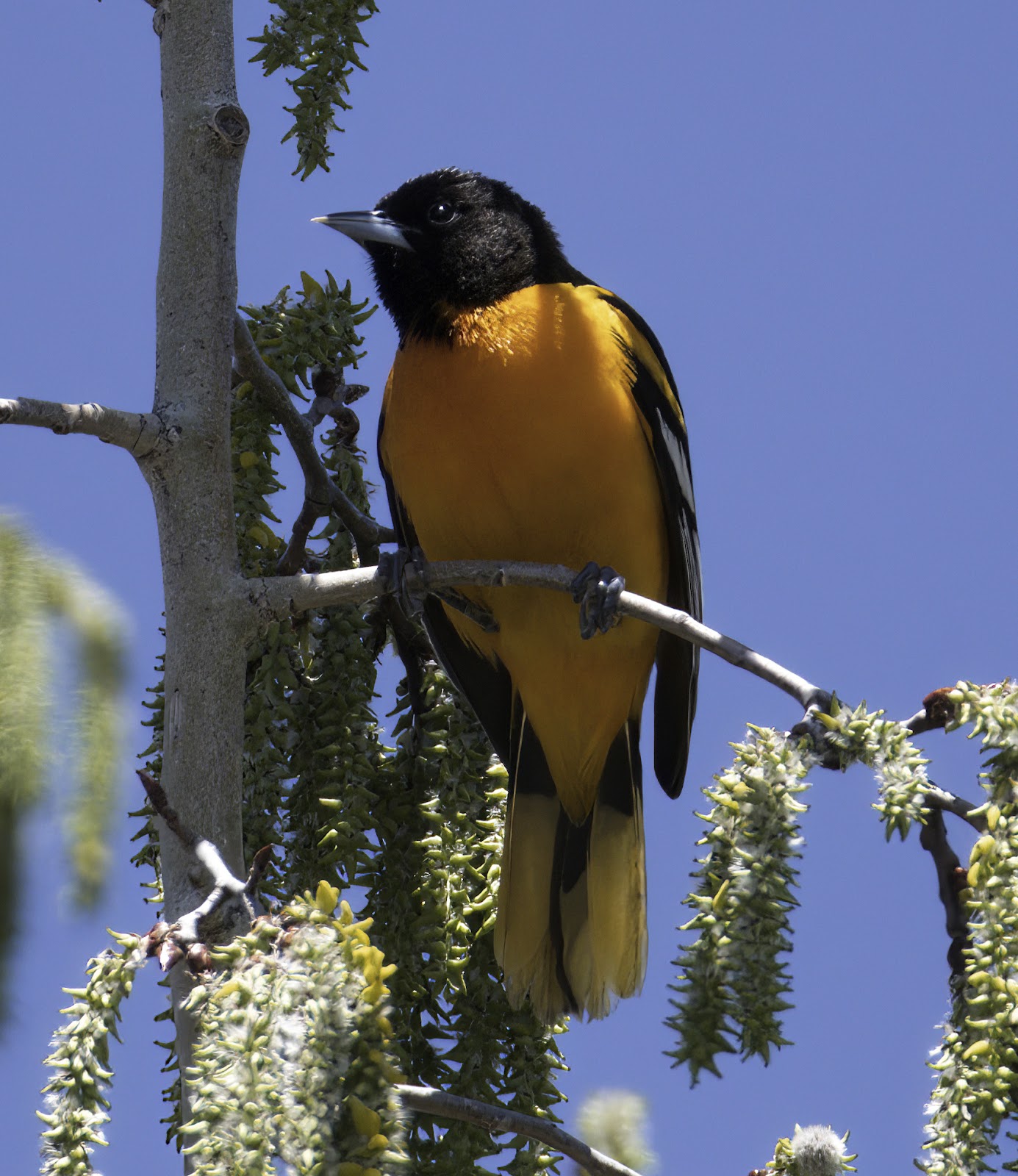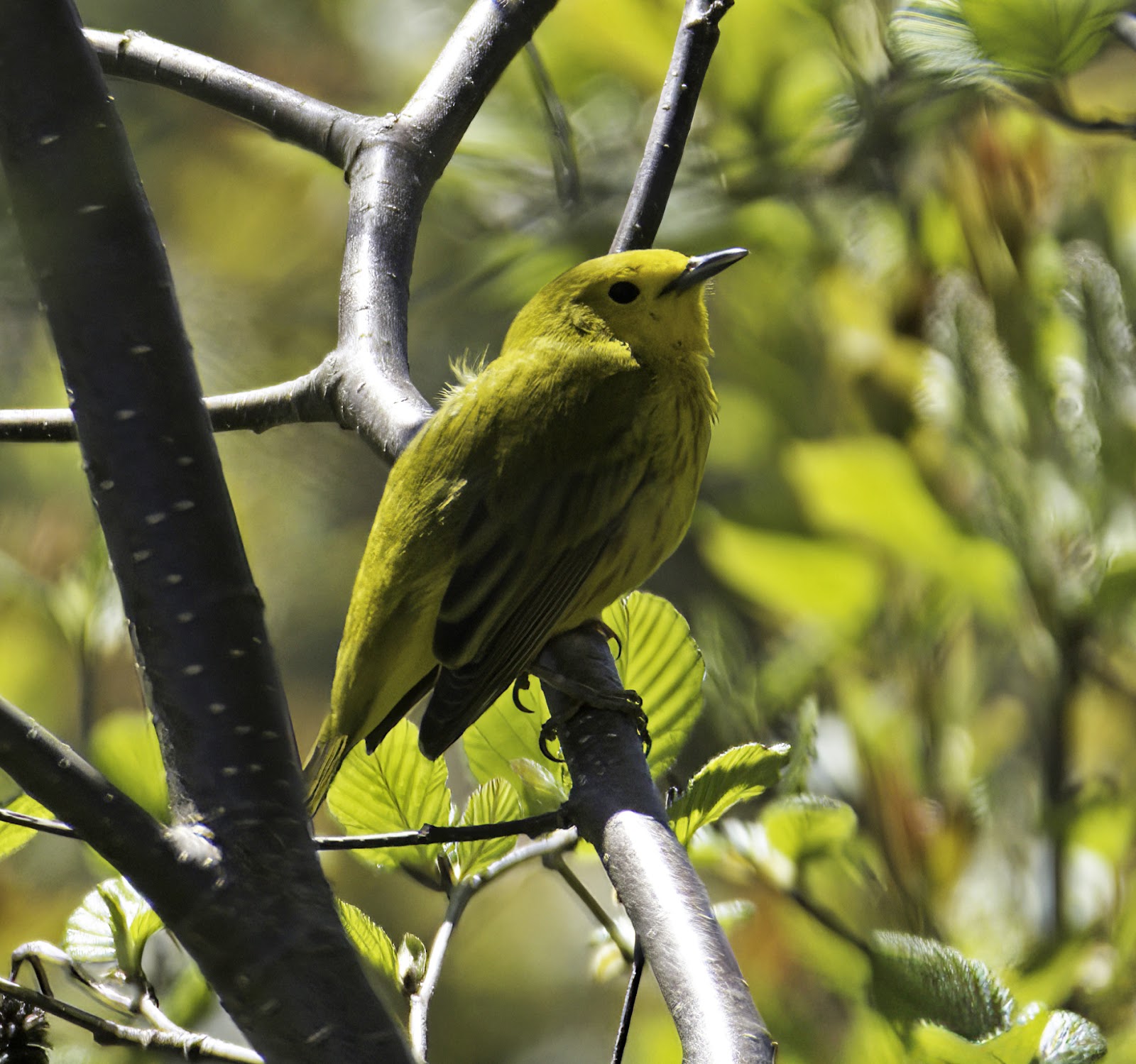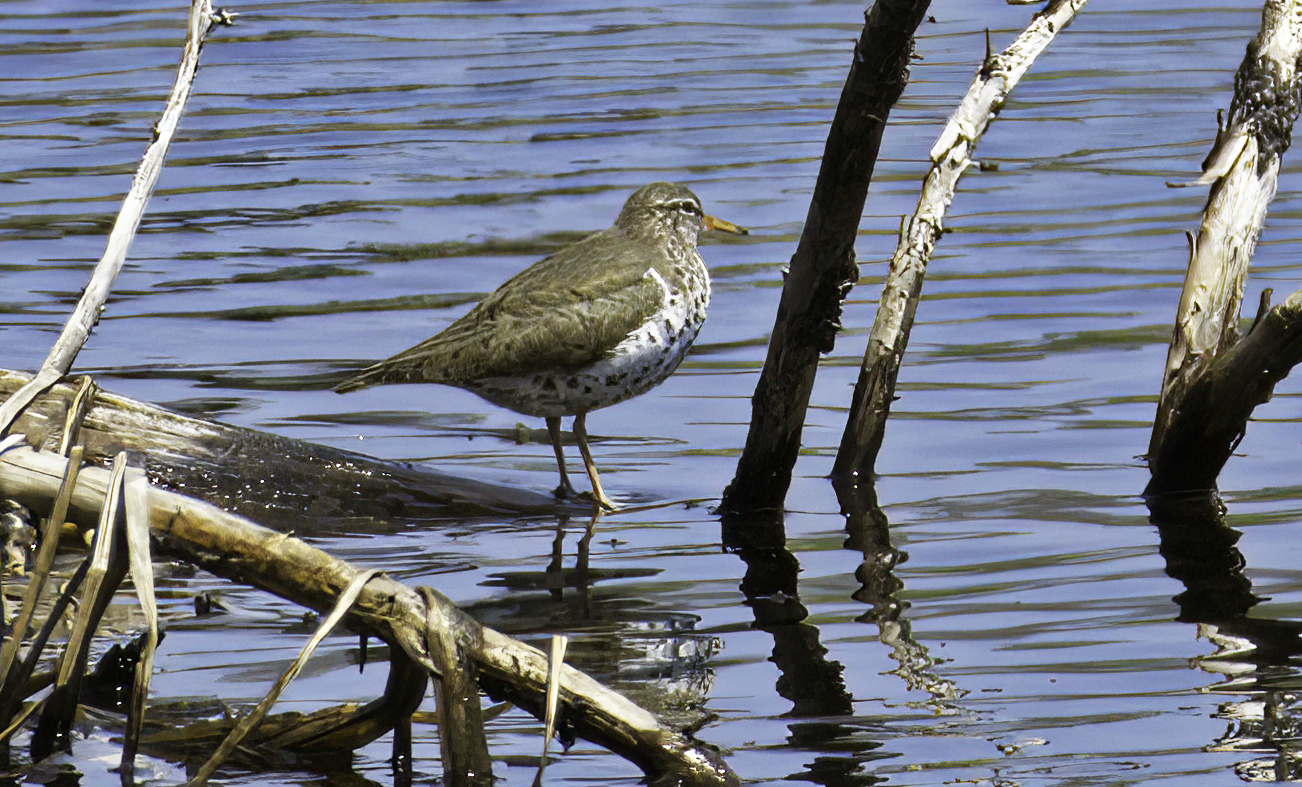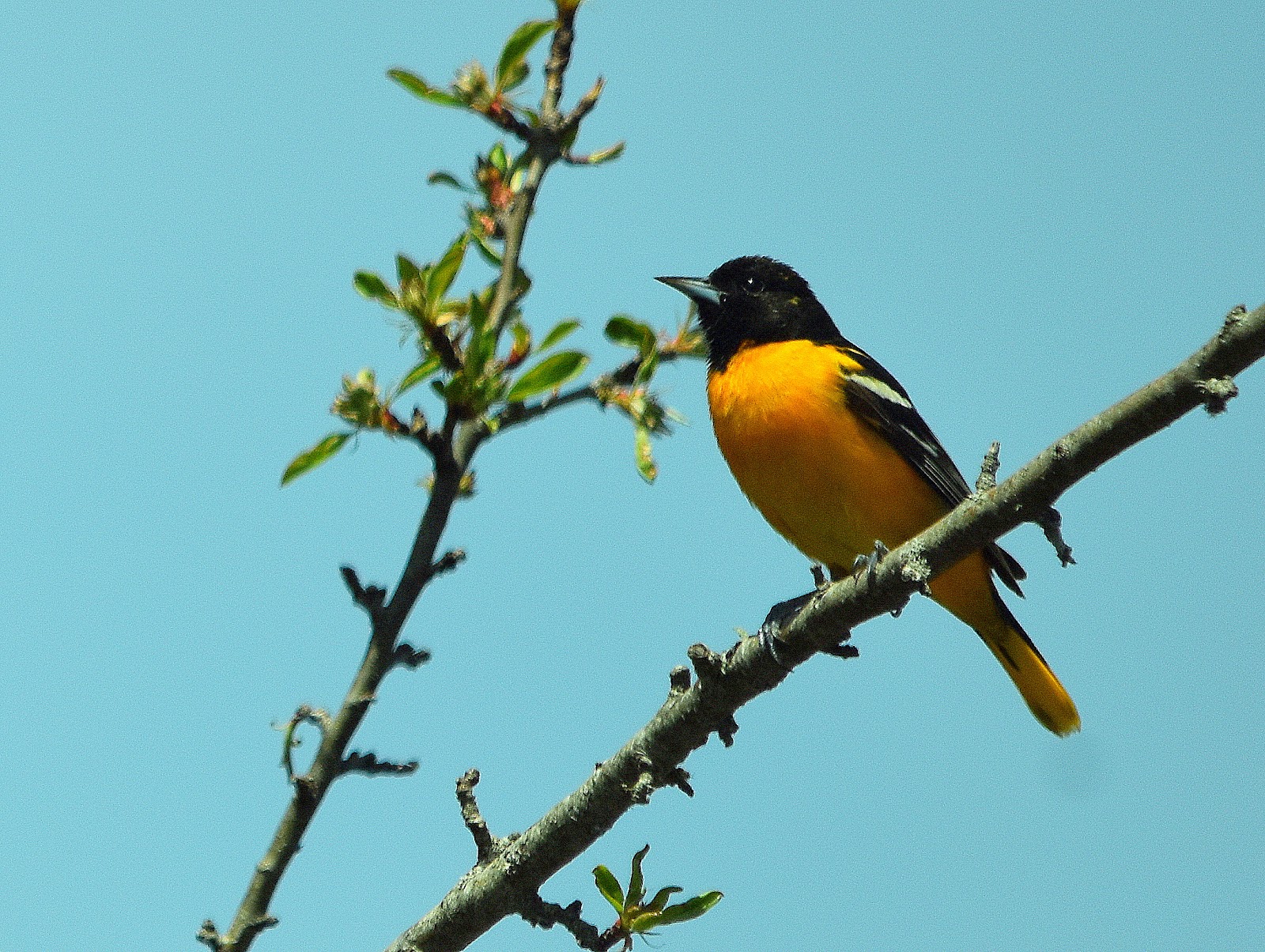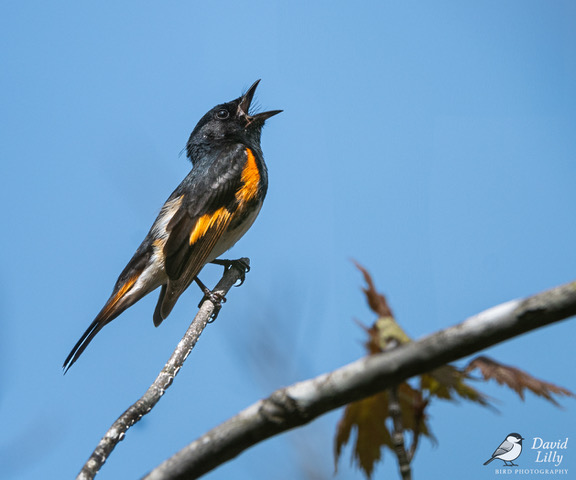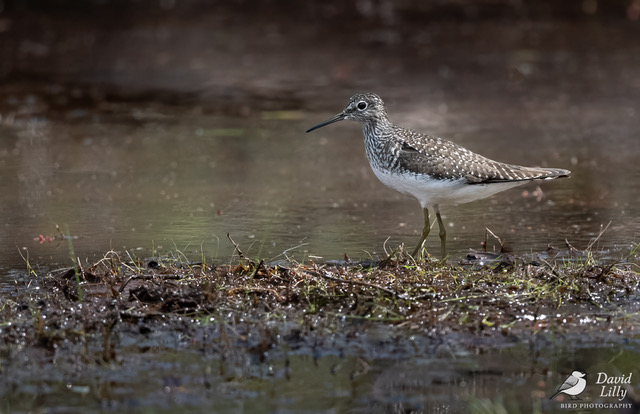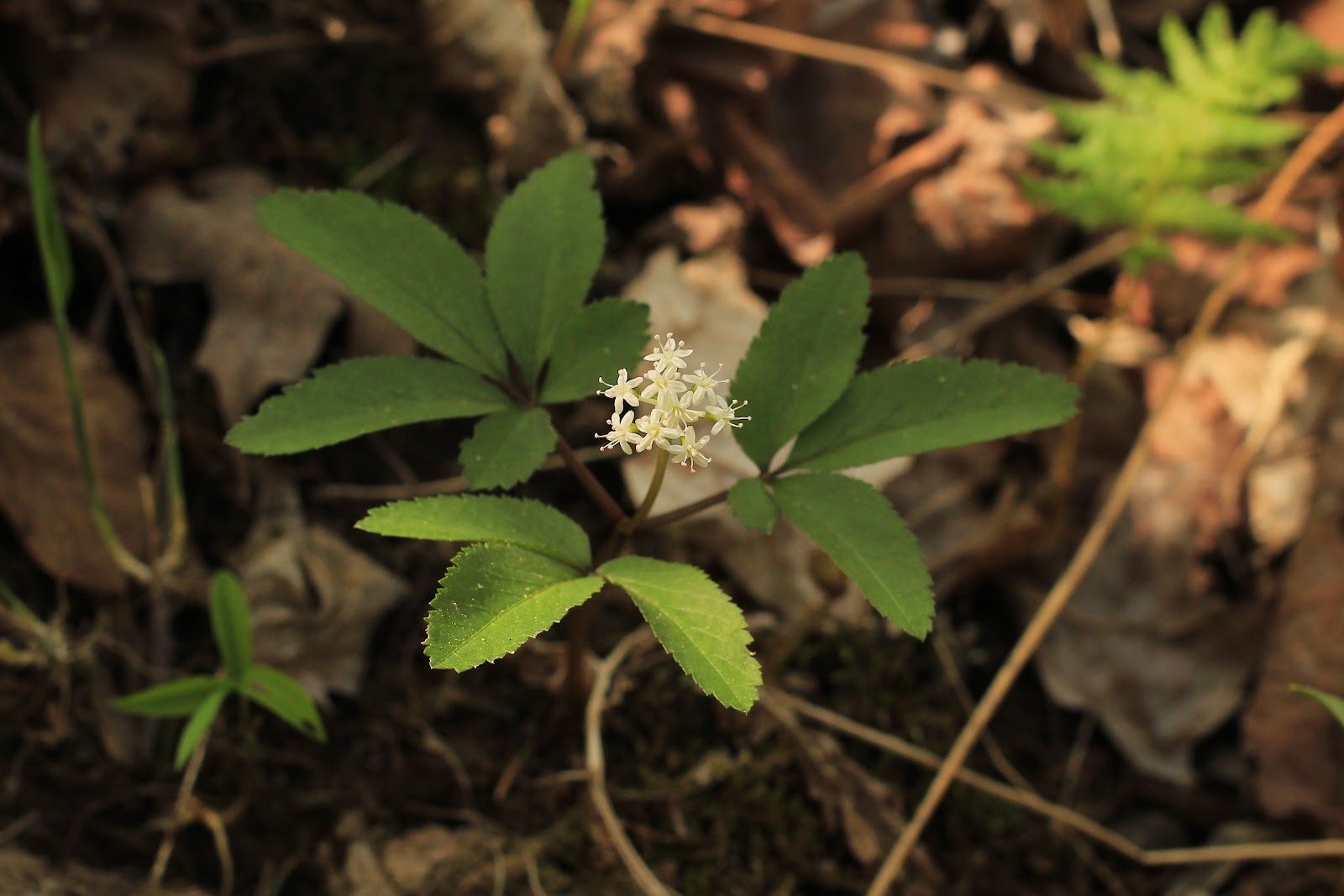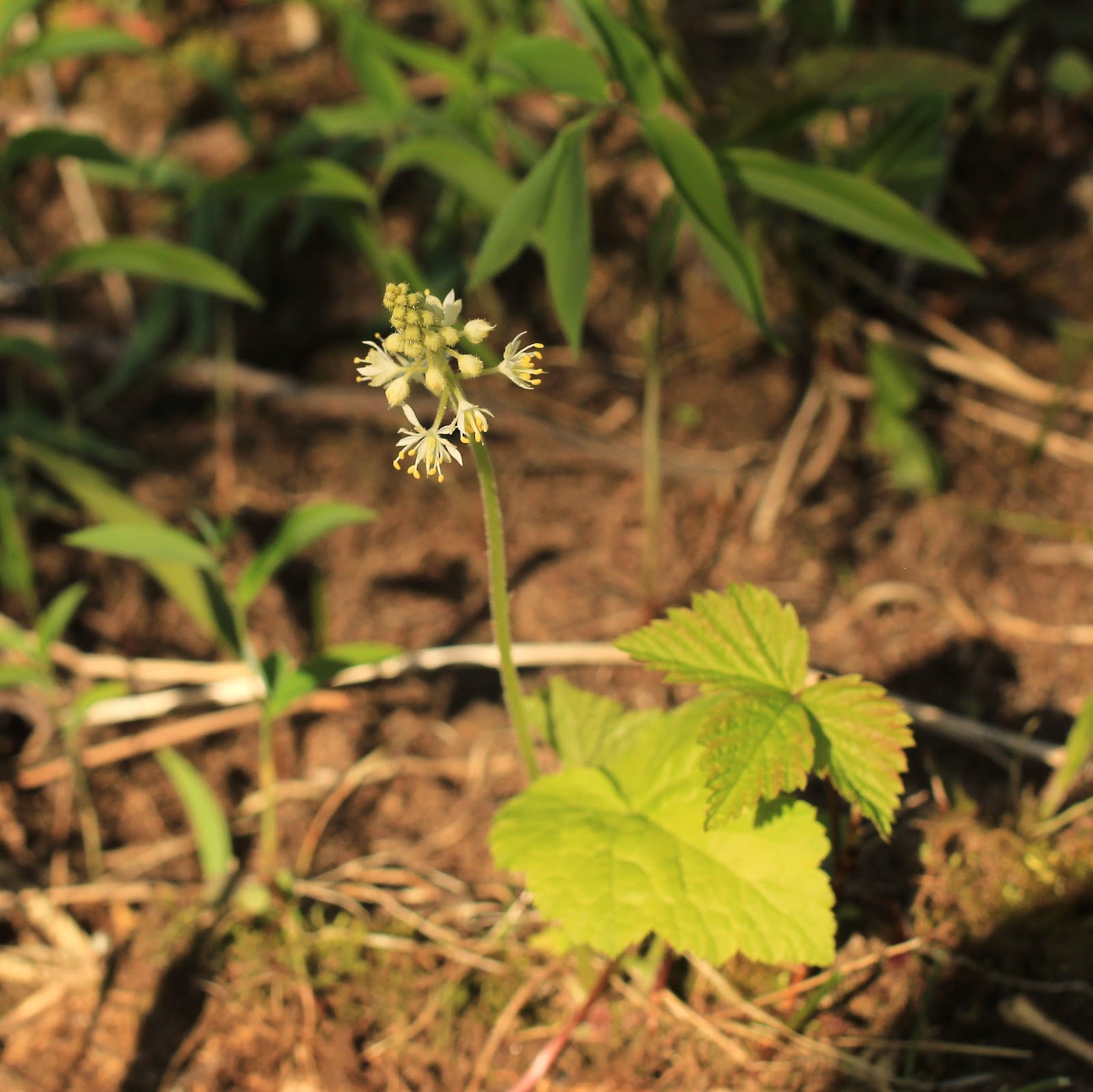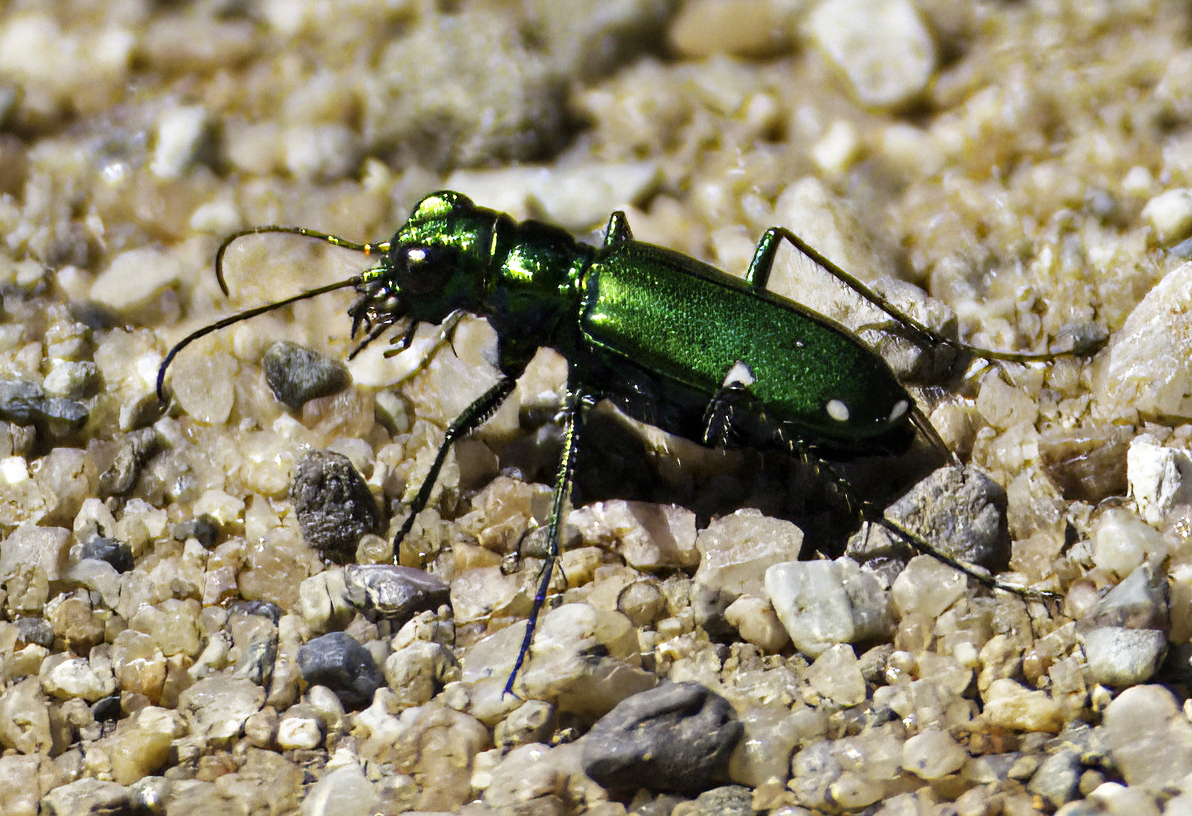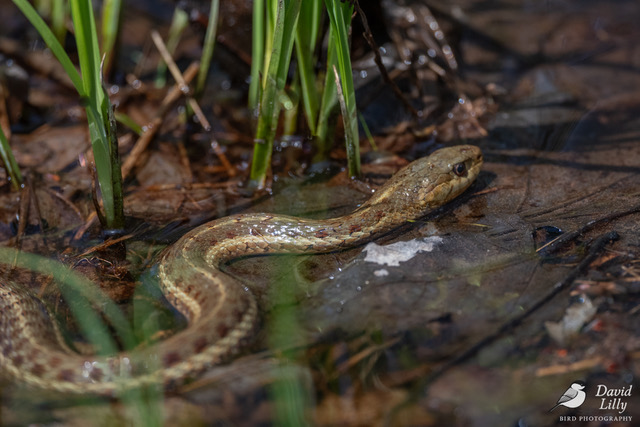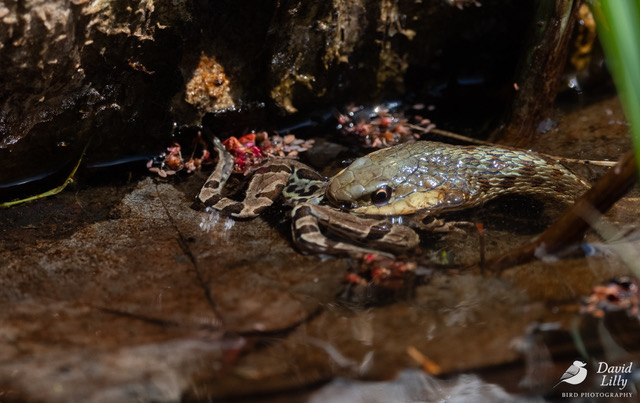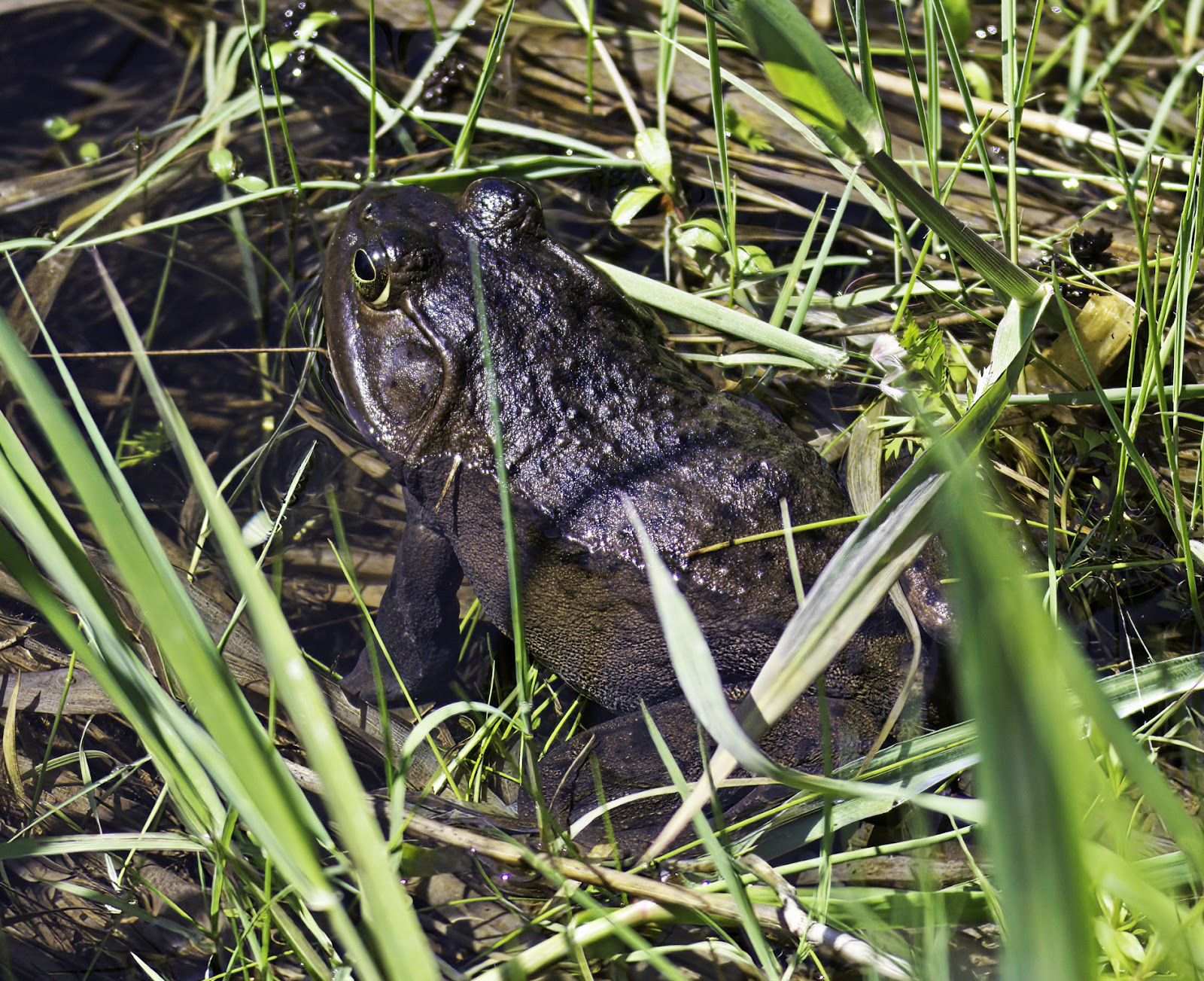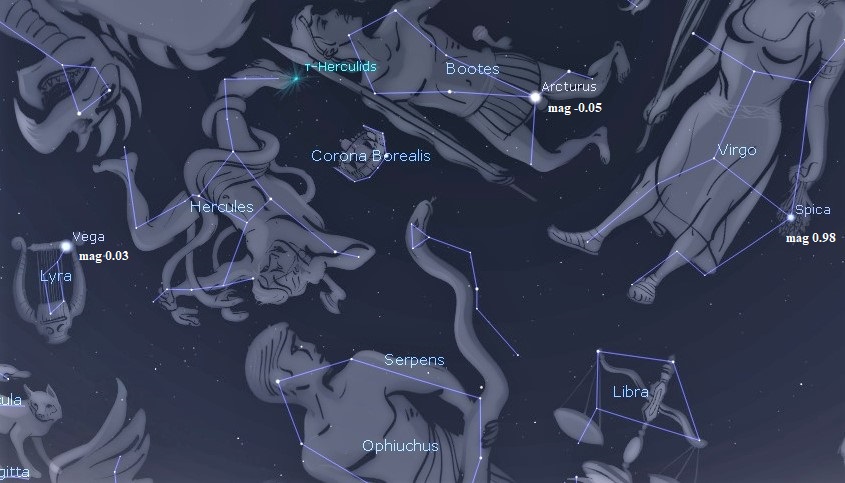NATURE
MONCTON NATURE NEWS
May 16, 2025
Nature Moncton members, as
well as any naturalist in New Brunswick or beyond, are invited to share
their photos and descriptions of recent nature sightings to build a fresh
(almost) daily edition of Nature News
To
respond by e-mail, please address your message to the information line
editor, nelsonpoirier435@gmail.com .
Please
advise the editor at nelsonpoirier435@gmail.com and the proofreader
Louise Nichols at Nicholsl@eastlink.ca if
any errors are noted in wording or photo labelling.
For more information
on Nature Moncton, check the website at www.naturemoncton.com
Proofreading
courtesy of Nichols nicholsl@eastlink.ca
To
view the live feed of the Peregrine Falcon nest cam on the summit of Assumption
Place in Moncton, go to:
**It has happened!! Our peregrine falcon couple atop Assumption Place in Moncton had their first chick hatch out very early Thursday morning, with a huge contingent of folks watching for that first chick to enter the world. And yes, it is absolutely beautiful (in the eyes of the beholder and parents).
It’s the start of a lot of activity we will
all be able to watch with no disturbance to their family life. It is hoped
things go as well as they did last year, but we have to bear in mind that this
is a wild nest with all the potential challenges that lie ahead.
Some screenshots of pertinent moments are captured and are at the top of the photo lineup today.
To add to Thursday's excitement, a second hatchling joined the family later in the day. Fred Richards captured an excellent video clip of the duo later in the day at the link below:
**There were a few very warm hours in Miramichi Thursday afternoon. A grey catbird found some relief on the patio of Deana and Peter Gadd. Deana installed a "Warbler Fall” last year. About 10 other birds in recent days have shown an interest but it seems the only warbler attracted to the gurgling water so far has been a black and white warbler, but it was too shy to take the plunge.
**Richard Blacquiere reports from Hampton that the duck population on the lagoon ponds has dropped significantly over the last few weeks. Most of the diving ducks like scaup, ring-necked, and bufflehead have departed for their nesting locations, mainly further north; only a few pairs of common goldeneye remain. Though northern shoveler, gadwall, green-winged teal, and American wigeon can still be found, the most numerous duck now present in the ponds is the wood duck, probably between 30 and 40 individuals, males outnumbering females by 10 to 1. Female Mallards have also disappeared, presumed to have gone away to nest; the male mallards are banding together in small groups, settling into a long summer of eating and swimming. Several warblers can now be found along the lagoon trails and through Spooner Island. One species is the northern waterthrush. They are shy birds, more often heard than seen, but on Tuesday, Richard was fortunate when one decided to briefly perch out in the open, allowing a few photos before disappearing back into the bushes. Moments later, a bobolink was found lurking in bushes not far from the waterthrush. Richard still had his camera in hand for a few photos of that unusual visitor to the trail. Thursday morning, he found a white-crowned sparrow on another part of the Hampton trail system. The sparrow was moving around and eventually hopped up on a branch in the sun, presenting another unexpected photo opportunity.
**David Lily photographed a leopard frog
in the Deer Park area of Oromocto on Thursday. As Mother Nature’s world will
sometimes arrange, it became prey to a garter snake, with that action
photographed as well.
David also got a nice photograph of a solitary
sandpiper that we don’t very often see in any significant numbers, as well
as a male American redstart fervently announcing his chosen territory.
**Jane LeBlanc found several warblers on a
bike ride this morning. The only one to pause for a photo was a male
magnolia warbler.
Later, at her friend's house, she found two Baltimore
orioles, a rose-breasted grosbeak, many American goldfinch, and a pine
siskin traveling with them.
**Norbert Dupuis visited the Reid McManus Nature
Reserve in Memramcook on Thursday to get photos of a male and female
American redstart to show the dramatic plumage difference. Norbert also
photographed a grey catbird announcing its territory.
**Bob Blake had four turkey vultures
floating on thermals over their Second North River backyard on Wednesday.
(Editor’s note: It is very rewarding to see
the swelling population of turkey vultures in New Brunswick now soaring in the
skies throughout the province.)
**On Tuesday Brian Stone returned to Highland Park in Salisbury and photographed a Baltimore oriole right outside his car in the parking lot. Other birds and life photographed there were a yellow-rumped warbler, a sora, a common grackle, a gray catbird, a male yellow warbler, and a female mallard duck with a troupe of ducklings. Female red-winged blackbirds were present and were speaking their minds audibly. A small mayfly rested on the back of a park bench long enough to get noticed and photographed and a few mustard white butterflies were checking out the dandelions.
**Bernice Johnstone and Nelson Poirier
visited a bogan area off the Little Southwest Miramichi River to check out
early spring plants. The site was blanketed with spring ephemerals and other
early risers, including wood anemone, sessile bellwort, dwarf ginseng,
yellow violet, foam flower, red trillium, blue cohosh, and spring beauty.
When the black bear comes out of hibernation
in the spring, its first bowel movement is called a plug, which had sealed off
the large intestine during hibernation. The second scat produced is a huge off
brown mass as the digestive system starts to work again. Bernice and Nelson observed
such a scat that was well over a foot in length and very bulky, which is not at
all typical of bear scat.
**This Week’s Sky at a Glance, 2025 May 17
– May 24
The basis for ranking stars by brightness dates back to the Greek astronomer
Hipparchus in the second century BCE. He grouped several hundred stars by their
apparent size, with the biggest being in the first magnitude group and the
smallest to the naked eye being sixth magnitude. Magnitude in this sense means
size, and even now many people refer to bright stars as big. The telescope and
astrophotography allowed us to detect stars much fainter, and in the 19th
century Norman Pogson adapted the old system to a standard. A five magnitude
difference was defined as a difference in brightness of exactly 100. Therefore,
a first magnitude star is a tad more than 2.5 times brighter than a second
magnitude star, about 16 times brighter than a fourth magnitude star, and 100
times brighter than one of sixth magnitude. The scale extends into negative
numbers for very bright objects, including planets and a few stars.
Check out a cloudless sky this week when it is dark. The bright star Vega is
often regarded as the benchmark, being very close to mag 0 (astronomers usually
shorten magnitude to mag). Arcturus is slightly brighter, edging into the
negative decimals at mag -0.05. Spica, the brightest star in Virgo, is very
close to mag 1 at 0.98. A mag 2 star is Polaris, the North Star, at the end of
the Little Dipper’s handle. Obviously, it is not the brightest star as some
people believe; it barely makes the top 50. A mag 3 star is Pherkad, the dimmer
of the two stars at the base of the Little Dipper. Venus is currently at mag
-4.5, the full Moon can be mag -12.5 and that big star we see in daytime is mag
-26.7 at midday.
This Week in the Solar System
Saturday’s sunrise in Moncton is at 5:44 and sunset will occur at 8:47, giving
15 hours, 3 minutes of daylight (5:51 and 8:50 in Saint John). Next Saturday
the Sun will rise at 5:37 and set at 8:55, giving 15 hours, 18 minutes of
daylight (5:45 and 8:57 in Saint John).
The Moon is at third quarter on Tuesday and it slides over Saturn and Venus
from Thursday to Saturday. Venus rises around 4 am this week, about half an
hour after Saturn. Mercury is lost in morning twilight as it approaches the
Sun. Mars continues to run eastward through Cancer, reaching the constellation
border of Leo the Lion next weekend – from the claws to the jaws. Jupiter is
seen best in twilight and it sets in the west-northwest around 11 pm.
Tune in to the Sunday Night Astronomy Show at
8 pm on the YouTube channel and Facebook page of Astronomy by the Bay.
Questions? Contact Curt Nason at nasonc@nbnet.nb.ca.
Nelson Poirier.
Nature Moncton


